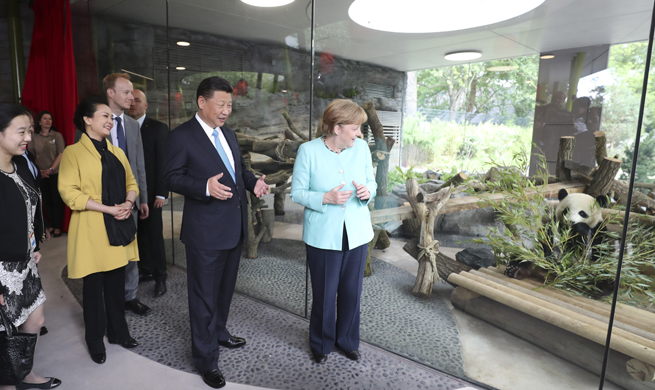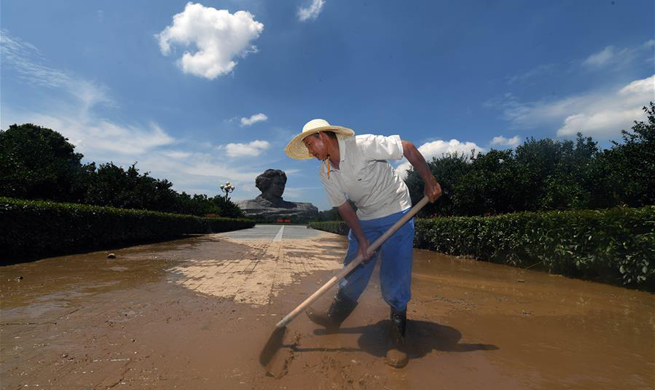SAN FRANCISCO, July 5 (Xinhua) -- While modern marine concrete structures crumble within decades, 2,000-year-old Roman piers and breakwaters endure to this day, and are stronger now than when they were first constructed.
The secret behind the ancient concrete, according to University of Utah geologist Marie Jackson and her colleagues, is that seawater filtering through the concrete leads to the growth of interlocking minerals that lend the concrete added cohesion.
In a paper published this week in American Mineralogist, the researchers report that Romans made marine concrete by mixing volcanic ash with lime and seawater to make a mortar, and then incorporating into that mortar chunks of volcanic rock, the "aggregate" in the concrete.
The combination of ash, water, and quicklime produces what is called a pozzolanic reaction, named after the city of Pozzuoli in the Bay of Naples.
The Romans may have gotten the idea for this mixture from naturally cemented volcanic ash deposits called tuff that are common in the area, as Roman author Pliny the Elder described around A.D. 79 in his Naturalis Historia.
One factor that made architectural concrete in Rome so resilient, Jackson was quoted as saying in a news release, is that the mineral intergrowths between the aggregate and the mortar prevent cracks from lengthening, while the surfaces of nonreactive aggregates in modern Portland cement only help cracks propagate farther.
Portland cement concrete also uses rock aggregate, but with an important difference: the sand and gravel particles are intended to be inert. Any reaction with the cement paste could form gels that expand and crack the concrete.
Roman concrete takes time to develop strength from seawater, and features less compressive strength than typical Portland cement. For those reasons, it's unlikely that Roman concrete could become widespread.
However, "the recipe was completely lost," Jackson acknowledged. She has extensively studied ancient Roman texts, but hasn't yet uncovered the precise methods for mixing the marine mortar, to fully recreate the concrete.
She is now working to develop a replacement recipe, however, using materials from western United States.

















